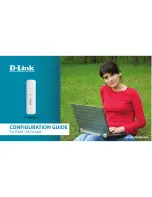
Prestige 2602HWNLI-D7A Support Notes
All contents copyright (c) 2007 ZyXEL Communications Corporation.
217
bit-pattern at the sending station into a higher data rate bit sequence using a "chipping" code. The
chipping code (also known as processing gain) introduces redundancy which allows data recovery if
certain bit errors occur during transmission. The FCC rules the minimum processing gain should be 10,
typical systems use processing gains of 20. IEEE 802.11b specifies the use of DSSS.
What is Frequency-hopping Spread Spectrum Technology
– (FHSS) ?
FHSS uses a narrowband carrier which hops through a predefined sequence of several frequencies at a
specific rate. This avoids problems with fixed channel narrowband noise and simple jamming. Both
transmitter and receiver must have their hopping sequences synchronized to create the effect of a single
"logical channel". To an unsynchronised receivers an FHSS transmission appears to be short-duration
impulse noise. 802.11 may use FHSS or DSSS.
Do I need the same kind of antenna on both sides of a link ?
No. Provided the antenna is optimally designed for 2.4GHz or 5GHz operation. WLAN NICs often
include an internal antenna which may provide sufficient reception.
Why the 2.4 Ghz Frequency range ?
This frequency range has been set aside by the FCC, and is generally labeled the ISM band. A few years
ago Apple and several other large corporations requested that the FCC allow the development of wireless
networks within this frequency range. What we have today is a protocol and system that allows for
unlicensed use of radios within a prescribed power level. The ISM band is populated by Industrial,
Scientific and Medical devices that are all low power devices, but can interfere with each other.
What is Server Set ID (SSID) ?
SSID is a configurable identification that allows clients to communicate to the appropriate base station.
With proper configuration, only clients that are configured with the same SSID can communicate with
base stations having the same SSID. SSID from a security point of view acts as a simple single shared
password between base stations and clients.
What is an ESSID ?
ESSID stands for Extended Service Set Identifier and identifies the wireless LAN. The ESSID of the
mobile device must match the ESSID of the AP to communicate with the AP. The ESSID is a 32-character
maximum string and is case-sensitive.
















































